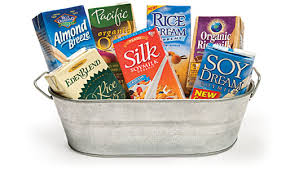Tonight’s menu:
Pork tenderloin roasted with thyme sprigs, sliced pears, sliced red onion, 2 tbsp honey, and 1 tbsp balsamic vinegar
Steamed broccoli
Mashed potatoes

Tonight’s menu:
Pork tenderloin roasted with thyme sprigs, sliced pears, sliced red onion, 2 tbsp honey, and 1 tbsp balsamic vinegar
Steamed broccoli
Mashed potatoes
As much as I try, I can’t resist soup during the winter. Not only does it warm the bones, but it is also a great way to get multiple meals in the amount of time it takes to make one. Set aside some for leftovers or even better, share half the pot with neighbors.
Tonight’s menu:
Green salad with slivered almonds and pomegranate seeds
Tonight’s menu:
Linguini with mushroom sauce, sautéed kale, and chicken tenderloins (Heat olive oil in large skillet over medium-low heat. Add shiitake mushrooms, garlic, and chicken tenderloins. Cook, until mushrooms tender and chicken cooked through. Add 1 cup water and cook until liquid reduced by half, about 5 minutes. Add kale, sauté briefly and then remove from heat. Add fresh chopped parsley and grated Parmesan)
Green salad
Sliced pears
Tonight’s dinner is based off a recipe, I found in Everyday Food. To get the right balance across food groups, I bumped up the amount of vegetables and added a small salad as the side dish.
Orecchiette with sausage, chard, and parsnips
Green salad
Pomegranate seeds and grapes
 Working in a pediatricians’ office, I find that I am often asked the same questions by different parents, showing that there are pretty common concerns amongst parents. One frequently asked question is which type of milk should I give my child? Living in the state of Vermont (aka Cows-R-Us) and with the strong marketing presence from the New England Dairy Council, dairy remains a strong part of the American diet. However, over the past few years, there have been a growing number of milk alternatives on grocery shelves, offering parents an option other than cow milk. When choosing a type of milk and when ethics are not a deciding factor, it is important to understand the different nutrients found in each type of milk. Some children, such as toddlers, require a higher fat content in their diet and benefit from a milk with a higher fat content. As always, the best foods tends to be the ones with the least amount of added ingredients, particularly added sugars. Also, supplementing a food with nutrients does not appear to be as beneficial as ones in which the nutrients are naturally found. Use the chart below to help understand the different nutritional composition from the various “milks” in the food supply.
Working in a pediatricians’ office, I find that I am often asked the same questions by different parents, showing that there are pretty common concerns amongst parents. One frequently asked question is which type of milk should I give my child? Living in the state of Vermont (aka Cows-R-Us) and with the strong marketing presence from the New England Dairy Council, dairy remains a strong part of the American diet. However, over the past few years, there have been a growing number of milk alternatives on grocery shelves, offering parents an option other than cow milk. When choosing a type of milk and when ethics are not a deciding factor, it is important to understand the different nutrients found in each type of milk. Some children, such as toddlers, require a higher fat content in their diet and benefit from a milk with a higher fat content. As always, the best foods tends to be the ones with the least amount of added ingredients, particularly added sugars. Also, supplementing a food with nutrients does not appear to be as beneficial as ones in which the nutrients are naturally found. Use the chart below to help understand the different nutritional composition from the various “milks” in the food supply.